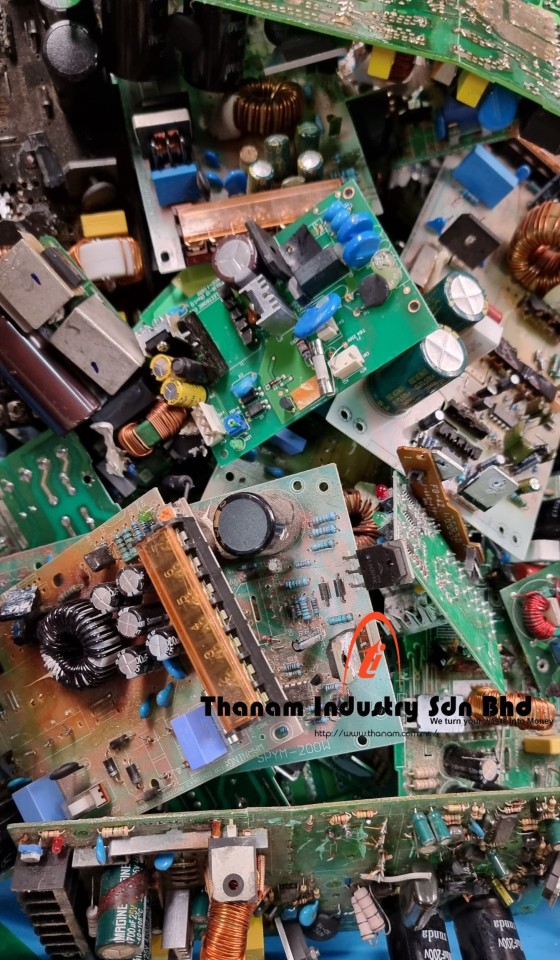#electronic waste
Text


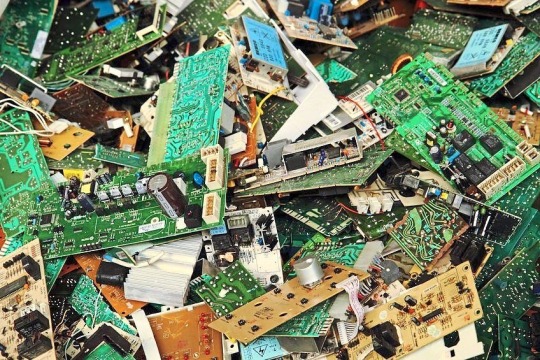
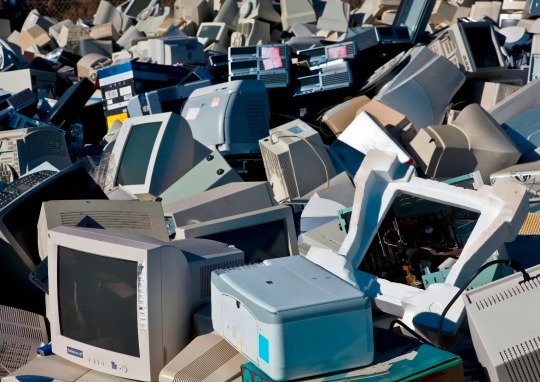
instagram: cheri.png
#Happy Boxing Day#consumerism#e waste#electronic waste#this is still an anticapitalist tech blog#cybercore#y2k#old internet#old web#cyber y2k#00s#2000s#tech#moodboard#cyber core#techcore#tech aesthetics#vintage tech#old tech#y2k nostalgia#nostalgiacore#nostalgia#tech blog
234 notes
·
View notes
Text
Transforming base materials into gold was one of the elusive goals of the alchemists of yore. Now Professor Raffaele Mezzenga from the Department of Health Sciences and Technology at ETH Zurich has accomplished something in that vein. He has not of course transformed another chemical element into gold, as the alchemists sought to do. But he has managed to recover gold from electronic waste using a byproduct of the cheesemaking process.
Electronic waste contains a variety of valuable metals, including copper, cobalt, and even significant amounts of gold. Recovering this gold from disused smartphones and computers is an attractive proposition in view of the rising demand for the precious metal.
Continue Reading.
95 notes
·
View notes
Text
A team of researchers at ETH Zurich in Switzerland has made a discovery that they say could turn recycling e-waste into a literal goldmine.
The researchers devised a novel way to extract precious metal from electronic waste, a sustainable method that is based on a byproduct from the food industry.
And it's pretty lucrative as well. For each dollar spent, the team suggests you could make $50 worth of gold.
Best of all, they say, it's an incredibly environmentally friendly process. The team found that protein fibril sponges, made from protein-rich byproducts from cheesemaking, can be used to extract the gold from discarded e-waste.
[...]
According to the World Health Organization, e-waste is the fastest-growing solid waste stream in the world, with millions of electrical devices being discarded and thrown away. Without being recycled properly, this waste is not only incredibly harmful to the environment, but it can also be toxic to humans.
99 notes
·
View notes
Photo
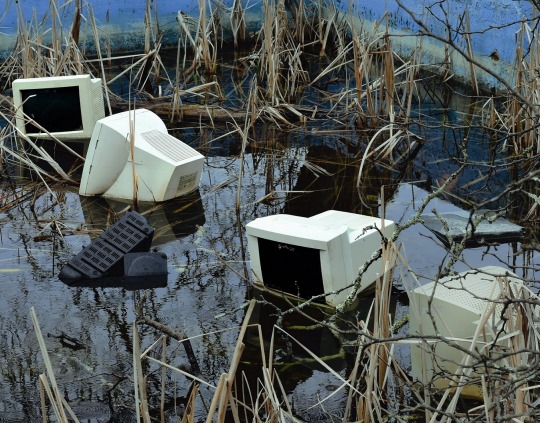
484 notes
·
View notes
Text
#good news#science#nature#environmentalism#environment#e bike#electronic waste#e waste#electric bikes
24 notes
·
View notes
Text
My boss at my work placement asked me to make some graphics to help her teach kids about waste diversion


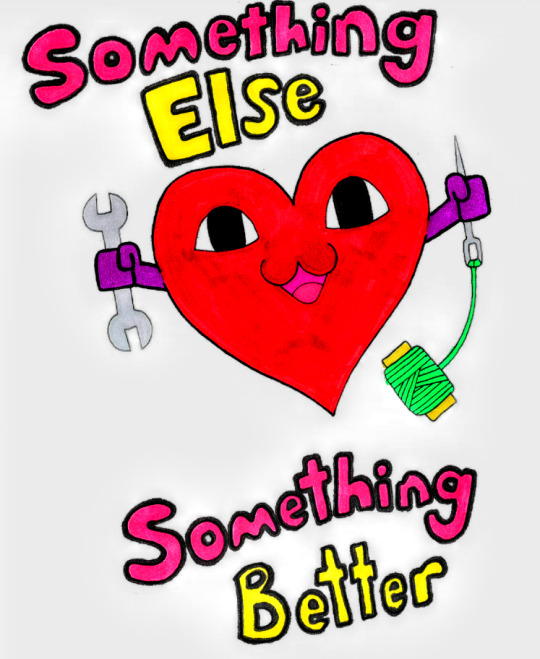
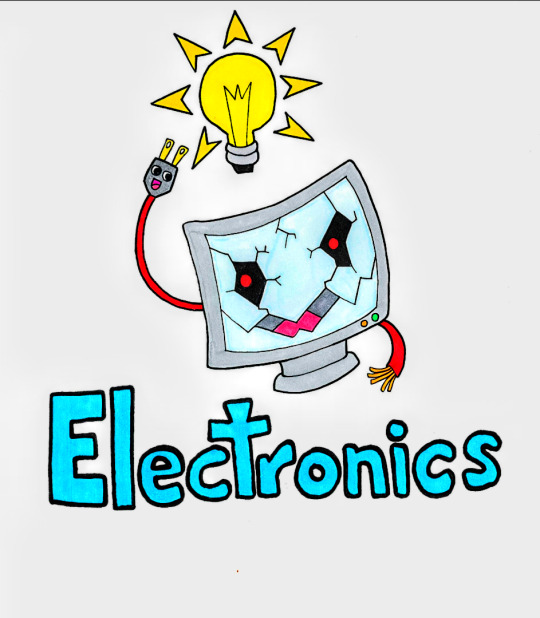
I don't love the donate and repair one but all in all I really like these guys
#ink#marker art#traditional art#drawing#waste management#waste diversion#hazardous waste#electronic waste#garbage
10 notes
·
View notes
Photo
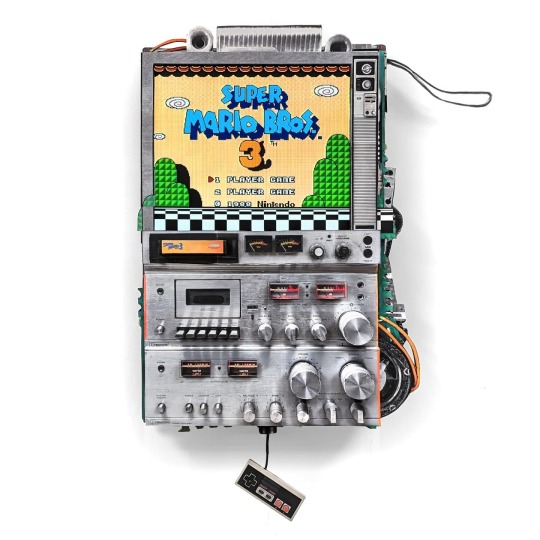
link
32 notes
·
View notes
Text
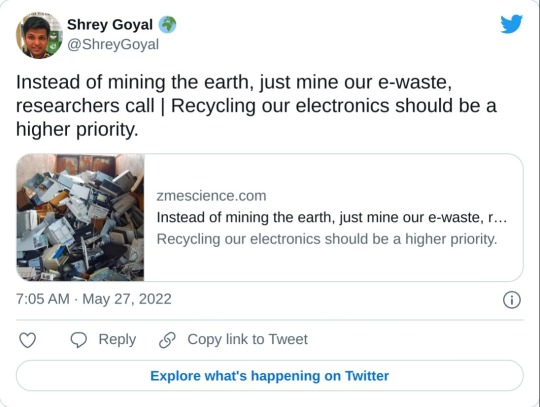
View on Twitter
Instead of mining the earth, just mine our e-waste, researchers call | Recycling our electronics should be a higher priority.
(Source)
77 notes
·
View notes
Text
Impact of E-Waste on Human Health and the Environment
Have you ever wondered what happens to your old electronics when you don't need them anymore? It's important to know about electronic waste or e-waste and how it affects us and the planet.

What is E-Waste?
E-waste is what we call old electronic stuff like phones, computers, and gadgets that people throw away. For detailed guides on E-Waste visit our blog What is E-Waste Recycling? and Why It’s Important
Why Is E-Waste a Problem?
E-waste is a big problem all over the world. Every year, there is more and more of it. This is not good for our health and the environment.
Health Problems
E-waste has dangerous things inside, like lead and mercury. When these things get into our food and water, they can make us sick. Breathing in bad air from burning e-waste is also harmful.
Harm to the Environment
When we don't recycle e-waste, it piles up in big garbage places. This takes up a lot of space and can hurt the land and animals. Also, our electronics have special metals inside that we can use again, like gold and silver. If we don't recycle them, we waste these important things.
What Can We Do?
There are things we can do to help with e-waste:
Use E-Waste Recyclers: E-waste recyclers are people or companies who take our old electronics and make them into new things.
Learn About E-Waste Recycling: There are different ways to recycle e-waste, and it's good to know about them.
Recycling Types: E-waste can be recycled in different ways. Some parts can be used again, and some can be turned into new things.
Let's all do our part to take care of our old electronics and keep our planet clean and healthy.
For a more in-depth exploration of this critical issue, visit our blog Impact of E-Waste on Human Health and the Environment or explore our website, E-Waste Mart.
#tech waste#e waste recycling#electronic waste#epr#e waste#e waste management#ewaste#epr services#recycling#effect of e waste#effect of electronic waste#waste management
2 notes
·
View notes
Text

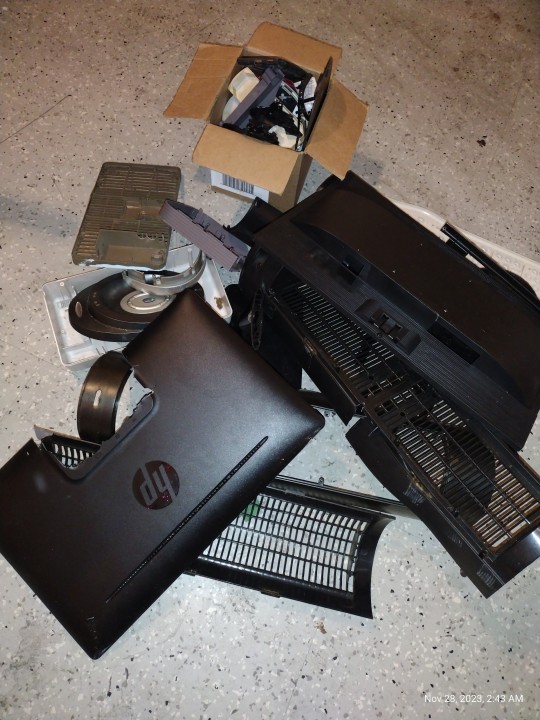

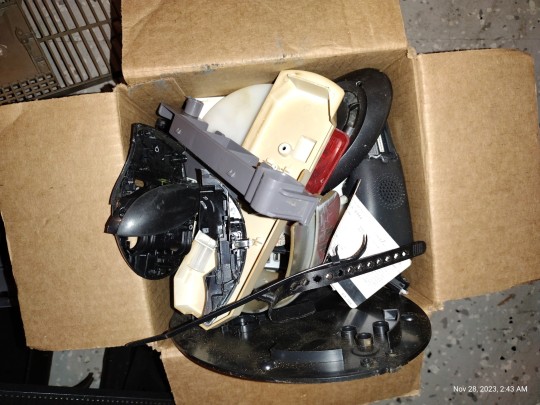
#recycling#environmetalists#electronic waste#recyclable materials#salvage#electronic salvage#kitchen appliances#global warming#ontario#kirouac#canadian artist#canada
0 notes
Text
This is horrible news, though it is not surprising. And it's about to get much, MUCH worse. Next year, Microsoft will kill Windows 10, and 11 has a much more strict set of hardware requirements. Just in my org alone, I know how much shit we're going to have to throw out. Many are perfectly fine computers (would make excellent Linux boxes), just a 7th gen CPU is "holding it back."
MEANWHILE, those motherfuckers at M$ have the audacity to greenwash themselves when they're actively making the problem so much worse. AND WINDOWS 11 CAN RUN ON "UNSUPPORTED" HARDWARE.
Don't get me fucking started on Apple either and the parameters for which something is "obsolete." It's going to be bad when they kill off the Intel Macs, I'm sure.
I know I'm screaming into the void here, but this shit is killing me inside and all I can do is complain while corporations fuck our assholes wide open.
I also understand that hardware cannot be supported forever. There has to be a cutoff. But I do not believe there are legitimate reasons for this cutoff. I have installed Win 11 on "unsupported" hardware MYSELF. I know that it is a lie, and that the push to force people onto newer hardware is financially motivated and not due to impossible technical limitations.
I know that I sound like a tinfoil hat conspiracist. I am rambling out of frustration, after all. But, what I have said here is all provable. If you are interested in this topic, please research further and don't just take my word for it. Sorry again for the rant.
0 notes
Text
24 notes
·
View notes
Text
Sustainable Solutions: Addressing E-Waste Pollution and Ensuring Food Security

Abstract
Electronic waste is currently the largest growing waste stream in the world. It is hazardous, complex and expensive to treat in an environmentally sound manner. Unsustainable electronic waste management of has led to pollution of rivers, which has negatively affected the environment, agriculture activities and food security. The research sought to investigate the waste management of electronic waste, its impact on environment, agriculture and food security in the rural communities. To recommend sustainable waste management strategy for the country and reduce the adverse effects on environment and agriculture to enhance food security. Zimbabwe has become an electronic waste hazard as waste pile up at backyard and in houses. A research survey was conducted in Mutare urban and peri-urban rural communities involving a sample of 1250 participants revealed that 29% of waste was electronic effluent, 29% of waste in backyard, 22% of waste in storerooms. The peri-urban rural communities are heavily affected downstream as the Sakubva River and its streams are polluted, either poisoned or drying up. Methods of disposal were landfilling, burning, backyard and storeroom storage. Food security as a state where the availability, accessibility, utilization and stability of food are ensured and food production is enough to cover the food demand of the people has been heavily affected as water for gardening and field crop irrigation is polluted. It was revealed that in some areas farmers have totally stopped gardening as the source of water has dried up due to both soil and water pollution.
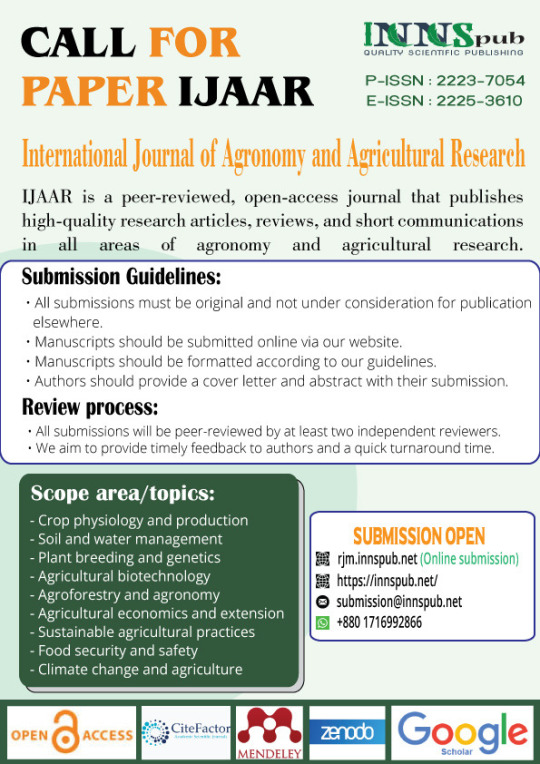
Introduction
The United Nations (2008) defines food security as a state where the availability, accessibility, utilization and stability of food are ensured and food production is enough to cover the food demand of the people. FAO (2010) reviewed that despite the fact that more than enough food was being produced per capita to adequately feed the global population, about 925 million people remained food insecure in 2010. Abalansa et al. (2021) indicated that electronic waste is a rapidly developing environmental problem particularly for the most developed countries that has negatively affected the sustainable agriculture practices for food security. Electronic waste are various forms of electric and electronic equipment that have ceased to be of value to their users or no longer satisfy their original purpose (Gill, 2021). The electronic waste products have exhausted their utility value through either redundancy, replacement, or breakage and this include both “white goods” such as refrigerators, washing machines, and microwaves and “brown goods” such as televisions, radios, computers, and cell phones (Gill, 2021). Electronic waste is considered the "fastest-growing waste stream in the world” (WEF, 2019) with 44.7 million tonnes generated in 2016- equivalent to 4500 Eiffel towers Balde et al. (2017). In 2018, an estimated 50 million tonnes of electronic waste was reported, thus the name ‘tsunami of electronic waste’ given by the United Nations (WEF, 2019). Its value is at least $62.5 billion annually (WEF, 2019).

The world currently has a variety of environmental problems resulting from manufacturing activities, including plastic pollution and electronic waste. Plastic pollution can be traced back to the beginning of the commercial production of plastics in the 1950s (Barnes et al., 2009), but more recently, electronic waste is considered an emerging environmental problem (Saldana-Duran et al., 2020). The sources of the majority of these can be traced to major developed countries, although there is an increasing contribution from rapidly developing countries like China and India. The Basel Convention was formulated to ensure that environmental problems are not exported across boundaries (Choksi, 2001; Ogunseitan, 2013; Kummer, 1992). Developed countries have state-of-the-art facilities, finances and technology to handle waste (Forti et al., 2020). However, much of the electronic waste is not recycled but exported to developing countries (Illes and Geeraerts, 2016), which are already struggling with economic problems such as poverty. Many factors contribute to this surge in electronic waste. These include the short lifecycle of equipment, low recycling (Rabani and Thakur, 2020), and the continuous upgrading of electronic equipment (Wang et al., 2019) as affluent societies demand the latest technology. Electronic waste has been described as one of most difficult classes of waste to manage due to a constant change in its features and specificities (Borthakur and Singh, 2020). Recently, Zimbabwe has also been become an electronic waste hazard as electronic equipment are piling up very fast in company offices and in houses. Electronic scrap components, such as central processing units, contain potentially harmful materials such as lead, cadmium, beryllium, or brominated flame-retardants. Recycling and disposal of electronic waste may involve significant risk to health of workers and their communities (Sakar, 2016). According to the Basel Convention (1989) on the Control of Transboundary Movements of Hazardous Wastes and Their Disposal of 1989, Art. 2(1), "'Wastes' are substance or objects, which are disposed of or are intended to be disposed of or are required to be disposed of by the provisions of national law" (Basel Convention, 1989). Under the Waste Framework Directive 2008/98/EC, Art. 3(1), the European Union defines waste as "an object the holder discards, intends to discard or is required to discard."(EPC, 2008).

In 2000, Zimbabwe moved a gear up to introduce use of high electronic technology mainly computers. The country received several donations of digital electronic equipment including computers, printers and digital instruments. However, as the old type writers, calculators and till machines and banking machine were replaced with the new electronic equipment, waste management became a challenge. Electronic waste was created as the old electronic products were discarded along the years, as it was believed that they had attained end of their useful life. The rapid expansion of technology and the consumption driven society results in the creation of a very large amount of electronic waste in the back yard, storerooms and in the spare rooms at homes. There are several pieces of legislation in place pertaining to litter and waste management. Electronic waste management in Zimbabwe is guided by the EMA, Chapter 20:27. Section 70 (1) of the EMA Act which stipulates that ‘No person shall discharge or dispose any waste in a manner that causes environmental pollution or ill health to any person’ (EMA, 2002). Thus, it follows that according to the EMA Act, any person whose activities generate waste is mandated to use measures to minimise the waste through treatment, reclamation and recycling, among others. Mihaela (2014) revealed that there is an interdependence, between sustainable agriculture practice concepts and food security. The downstream communities in the peri urban of Muatre require water for agricultural activities, which has been heavily affected by pollution upstream, hence, food security is also heavily affected downstream. Hamid, (2019) indicated that the main outcome of sustainable agriculture practices is food security.
Nevertheless, about half of the global population is affected by food insecurity and malnutrition, a symptom of the dysfunctions of the current food system (Hamid, 2019) as the land, soil, water and air are polluted by waste. Therefore, since Zimbabwe moved a gear up to introduce use of high electronic technology mainly computers. The improper management and disposal of the electronic waste from the old electronic products along the years as resulted into pollution of the dumping sites, rivers and streams. The pollution has heavily affected the agriculture activities and the communities downstream is now food insecure. The research sought to investigate the waste management of electronic waste, the impact of the electronic pollution on agriculture and food security in the study area. This was done to recommend sustainable waste management strategy for the country and reduce the effects of pollution on environment and agriculture in order to enhance food security.
Source : Need for sustainable solution: Environment, rural agriculture and food security affected by electronic waste pollution of streams and Sakubva River
1 note
·
View note
Text
Turning Waste Into Gold - Technology Org
New Post has been published on https://thedigitalinsider.com/turning-waste-into-gold-technology-org/
Turning Waste Into Gold - Technology Org
ETH Zurich researchers have recovered the precious metal from electronic waste. Their highly sustainable new method is based on a protein fibril sponge, which the scientists derive from whey, a food industry byproduct.
The gold nugget obtained from computer motherboards in three parts. The largest of these parts is around five millimetres wide. Image credit: ETH Zurich / Alan Kovacevic
Transforming base materials into gold was one of the elusive goals of the alchemists of yore. Now Professor Raffaele Mezzenga from the Department of Health Sciences and Technology at ETH Zurich has accomplished something in that vein. He has not of course transformed another chemical element into gold, as the alchemists sought to do. But he has managed to recover gold from electronic waste using a byproduct of the cheesemaking process.
Electronic waste contains a variety of valuable metals, including copper, cobalt, and even significant amounts of gold. Recovering this gold from disused smartphones and computers is an attractive proposition in view of the rising demand for the precious metal. However, the recovery methods devised to date are energy-intensive and often require the use of highly toxic chemicals. Now, a group led by ETH Professor Mezzenga has come up with a very efficient, cost-effective, and above all far more sustainable method: with a sponge made from a protein matrix, the researchers have successfully extracted gold from electronic waste.
Selective gold adsorption
To manufacture the sponge, Mohammad Peydayesh, a senior scientist in Mezzenga’s Group, and his colleagues denatured whey proteins under acidic conditions and high temperatures, so that they aggregated into protein nanofibrils in a gel. The scientists then dried the gel, creating a sponge out of these protein fibrils.
To recover gold in the laboratory experiment, the team salvaged the electronic motherboards from 20 old computer motherboards and extracted the metal parts. They dissolved these parts in an acid bath so as to ionise the metals.
When they placed the protein fibre sponge in the metal ion solution, the gold ions adhered to the protein fibres. Other metal ions can also adhere to the fibres, but gold ions do so much more efficiently. The researchers demonstrated this in their paper, which they have published in the journal external pageAdvanced Materialscall_made.
How the gold is recovered: Gold ions adhere to a sponge of protein fibrils. Image credit: Peydayesh M et al. Advanced Materials, 2024, adapted
As the next step, the researchers heated the sponge. This reduced the gold ions into flakes, which the scientists subsequently melted down into a gold nugget. In this way, they obtained a nugget of around 450 milligrams out of the 20 computer motherboards. The nugget was 91 percent gold (the remainder being copper), which corresponds to 22 carats.
Economically viable
The new technology is commercially viable, as Mezzenga’s calculations show: procurement costs for the source materials added to the energy costs for the entire process are 50 times lower than the value of the gold that can be recovered.
Next, the researchers want to develop the technology to ready it for the market. Although electronic waste is the most promising starting product from which they want to extract gold, there are other possible sources. These include industrial waste from microchip manufacturing or from gold-plating processes. In addition, the scientists plan to investigate whether they can manufacture the protein fibril sponges out of other protein-rich byproducts or waste products from the food industry.
“The fact I love the most is that we’re using a food industry byproduct to obtain gold from electronic waste,” Mezzenga says. In a very real sense, he observes, the method transforms two waste products into gold. “You can’t get much more sustainable than that!”
Source: ETH Zurich
You can offer your link to a page which is relevant to the topic of this post.
#2024#advanced materials#chemical#chemicals#Chemistry & materials science news#cobalt#computer#computers#course#electronic#electronic waste#energy#ETH Zurich#Featured technology news#Food#gold#Health#Health sciences and technology#how#Ideas#Industry#it#LED#Link#Manufacturing#materials#Matrix#metal#Metals#Method
0 notes
Text
Tesigrafía 6: “Reciclaje de indio mediante lixiviación ácida a partir de Residuos de Pantallas de Cristal Líquido” por César Ruíz Camou.
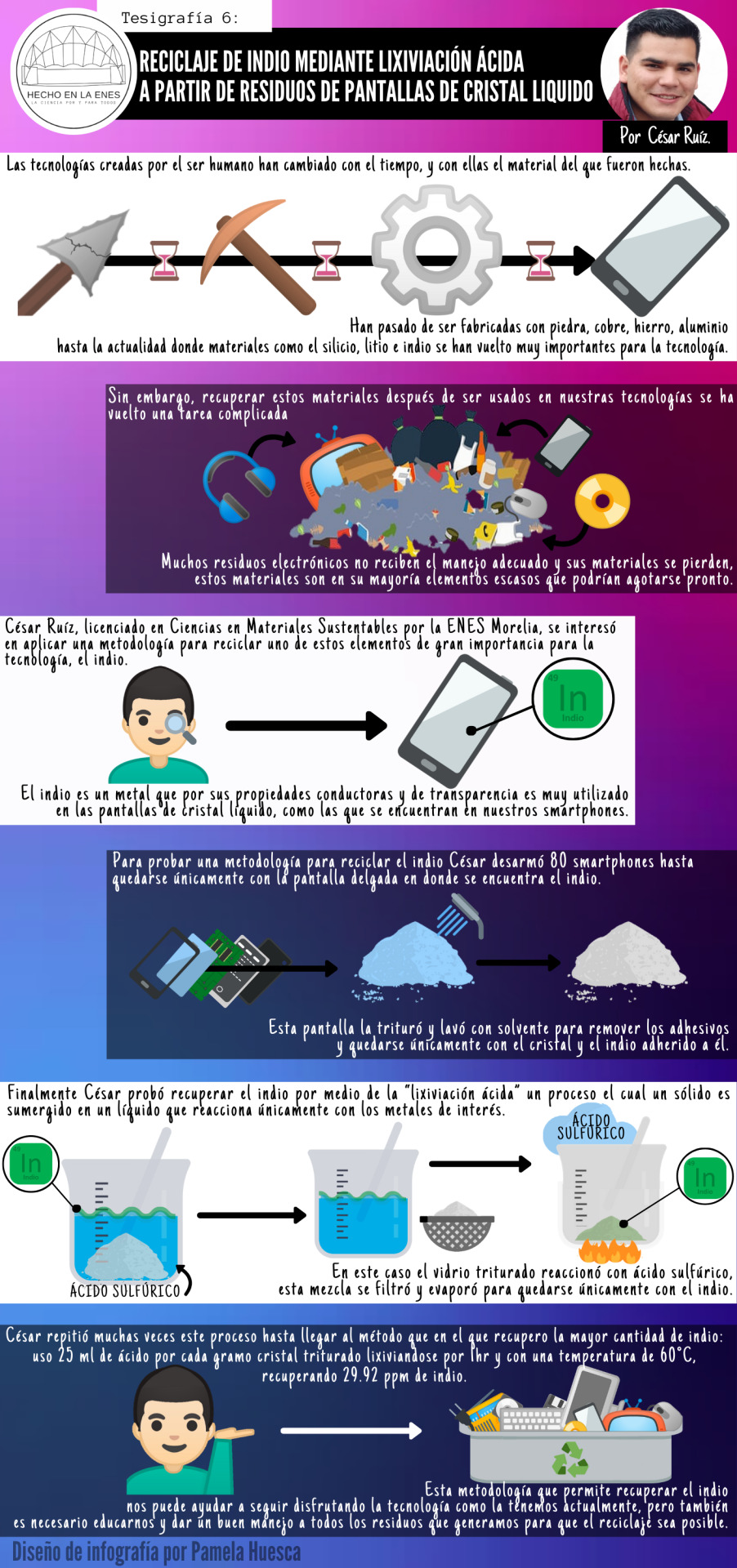
#hecho en la enes#unam#hechoenlaenes6#cesar#infografía#materiales#residuos electronicos#divulgacioncientifica#peridismo#ambiente#infographic#electronic waste#divulgation#journalism#enviornment
0 notes
